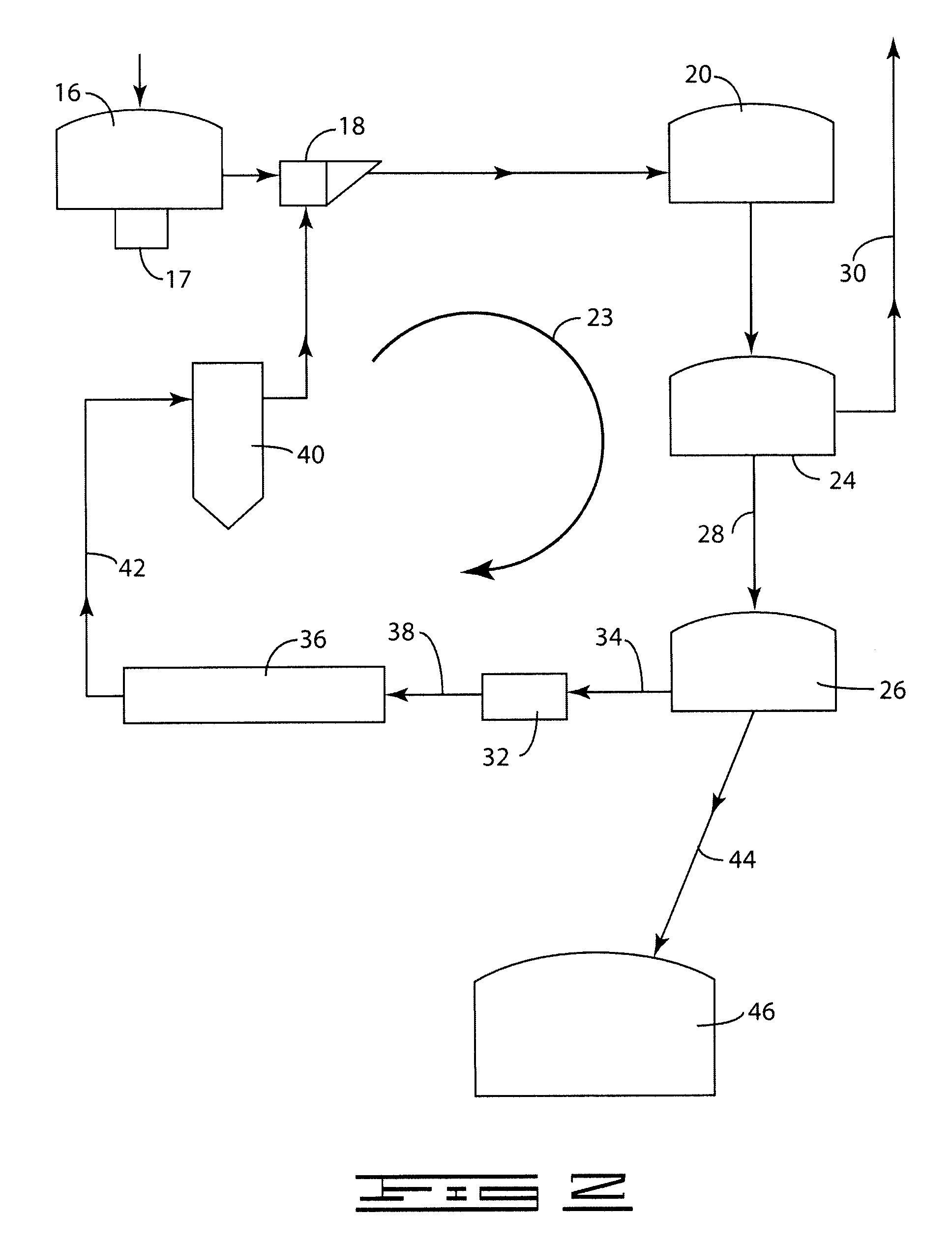Particulate matter and methods of obtaining same from a kraft waste reclamation
a technology of kraft waste and activated carbon particles, which is applied in the direction of dispersed particle separation, separation process, coating, etc., can solve the problems of inability to produce calcium carbonate of larger size and surface area economically, insufficient calcium carbonate agricultural application incomplete, and high cost of obtaining calcium carbonate of sufficient size and surface area
- Summary
- Abstract
- Description
- Claims
- Application Information
AI Technical Summary
Benefits of technology
Problems solved by technology
Method used
Image
Examples
Embodiment Construction
[0038]Before explaining at least one embodiment of the invention in detail, it is to be understood that the invention is not limited in its application to the details of construction and the arrangements of the components set forth in the following description or illustrated in the drawings. The invention is capable of other embodiments or of being practiced or carried out in various ways. Also, it is to be understood that the phraseology and terminology employed herein is for the purpose of description and should not be regarded as limiting.
[0039]The present invention provides a method for obtaining particulate calcium carbonate having an average particle size less than about 12 microns. The method comprises the steps of withdrawing from a pulp mill a mixture containing calcium carbonate, treating the mixture to remove contaminants contained in the mixture to produce a treated mixture containing calcium carbonate, and recovering from the treated mixture calcium carbonate having an ...
PUM
| Property | Measurement | Unit |
|---|---|---|
| Length | aaaaa | aaaaa |
| Particle size | aaaaa | aaaaa |
Abstract
Description
Claims
Application Information
 Login to View More
Login to View More - R&D
- Intellectual Property
- Life Sciences
- Materials
- Tech Scout
- Unparalleled Data Quality
- Higher Quality Content
- 60% Fewer Hallucinations
Browse by: Latest US Patents, China's latest patents, Technical Efficacy Thesaurus, Application Domain, Technology Topic, Popular Technical Reports.
© 2025 PatSnap. All rights reserved.Legal|Privacy policy|Modern Slavery Act Transparency Statement|Sitemap|About US| Contact US: help@patsnap.com



